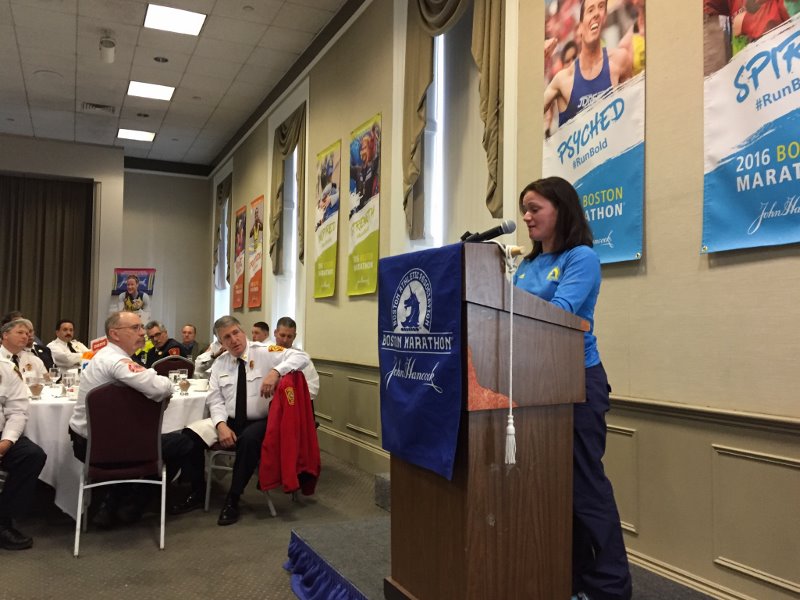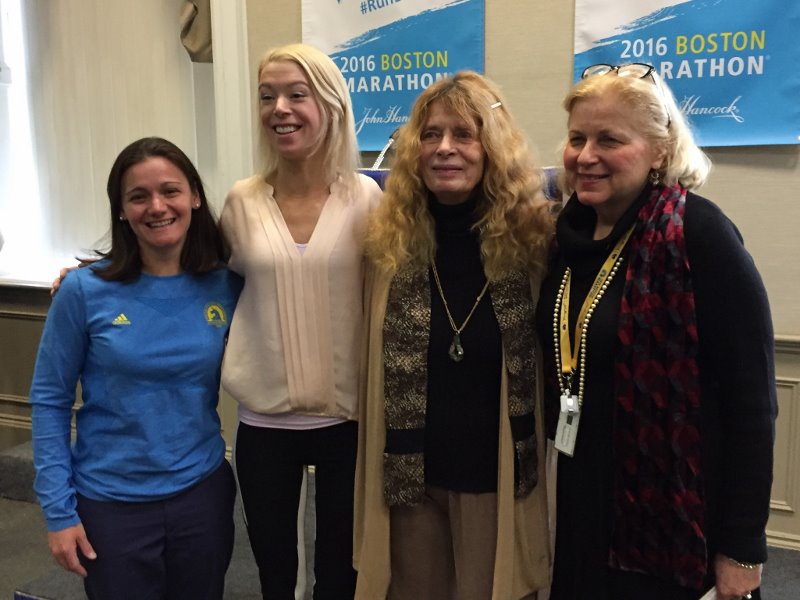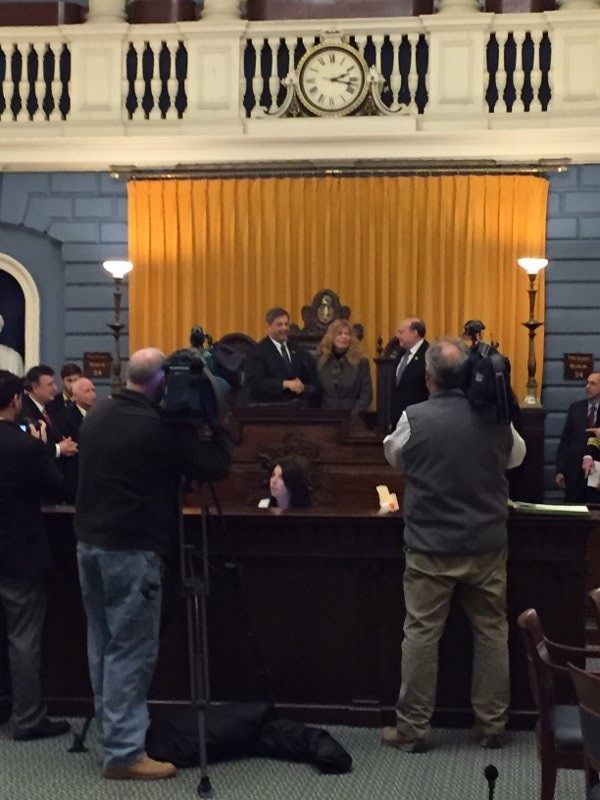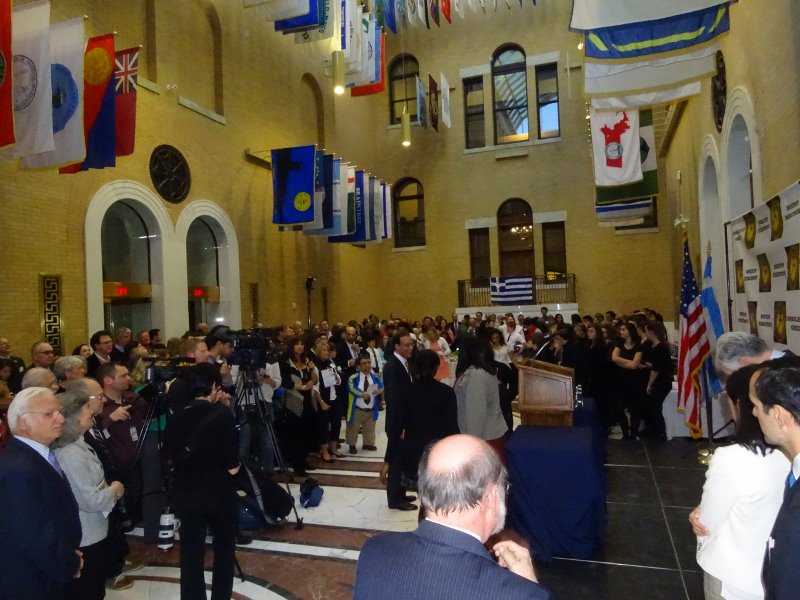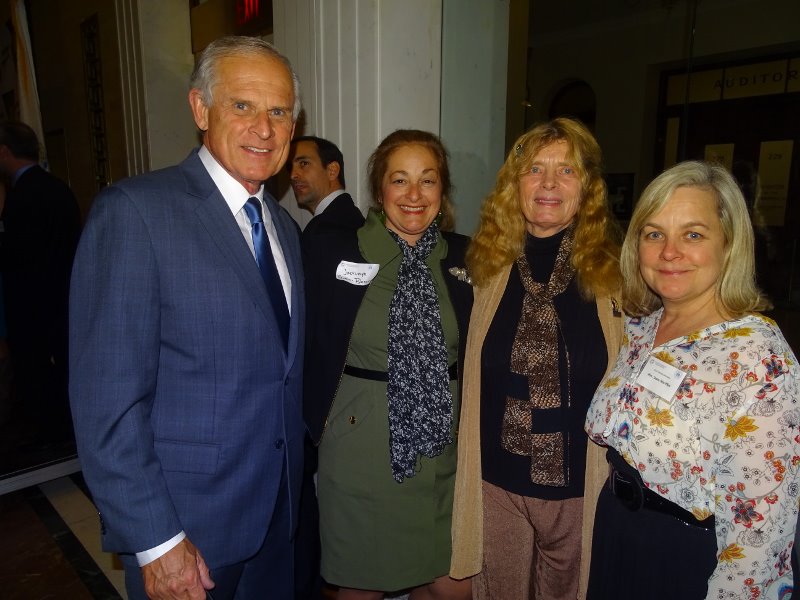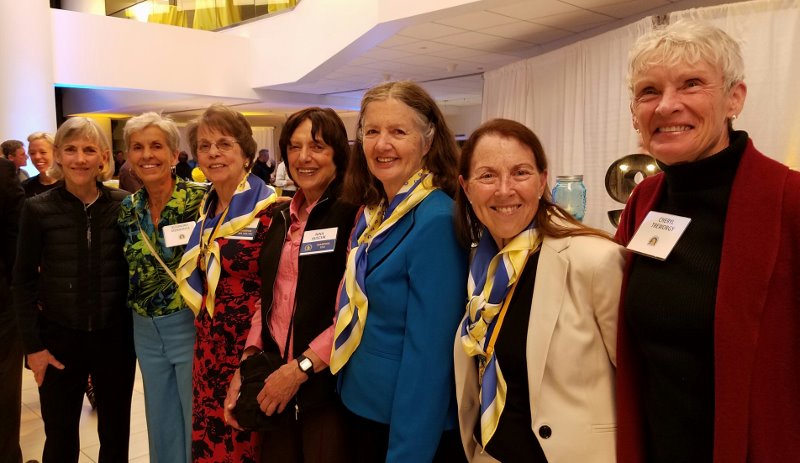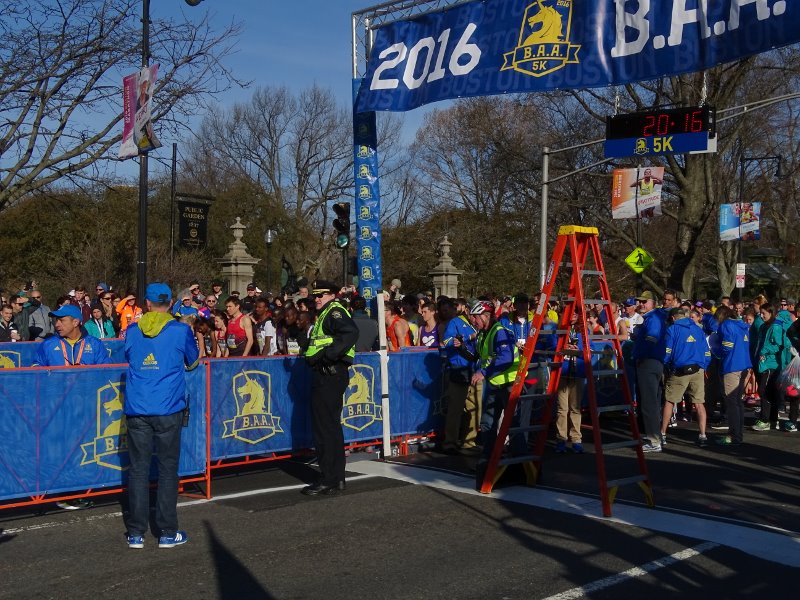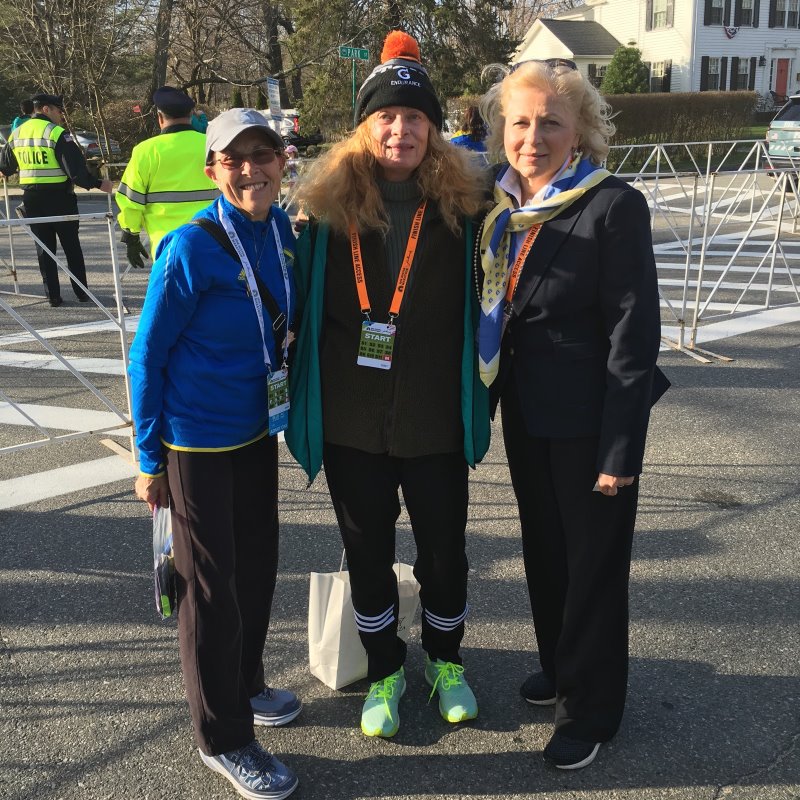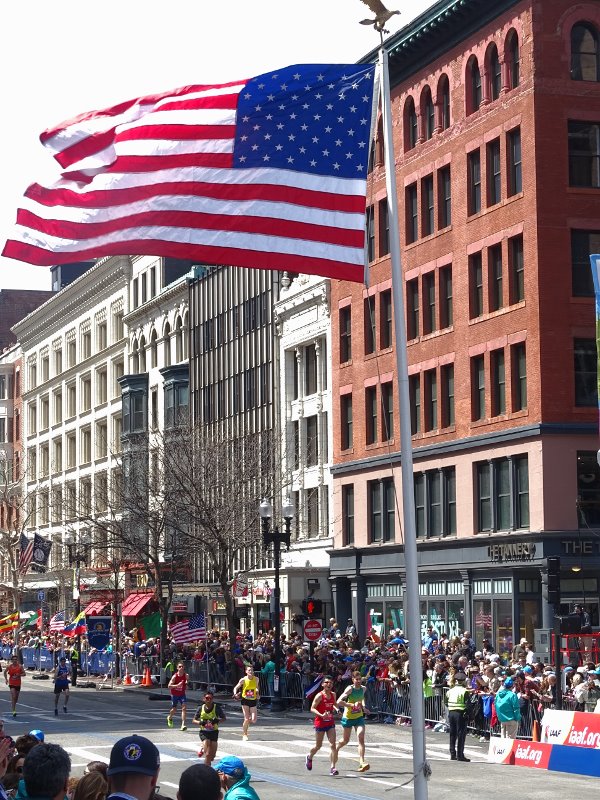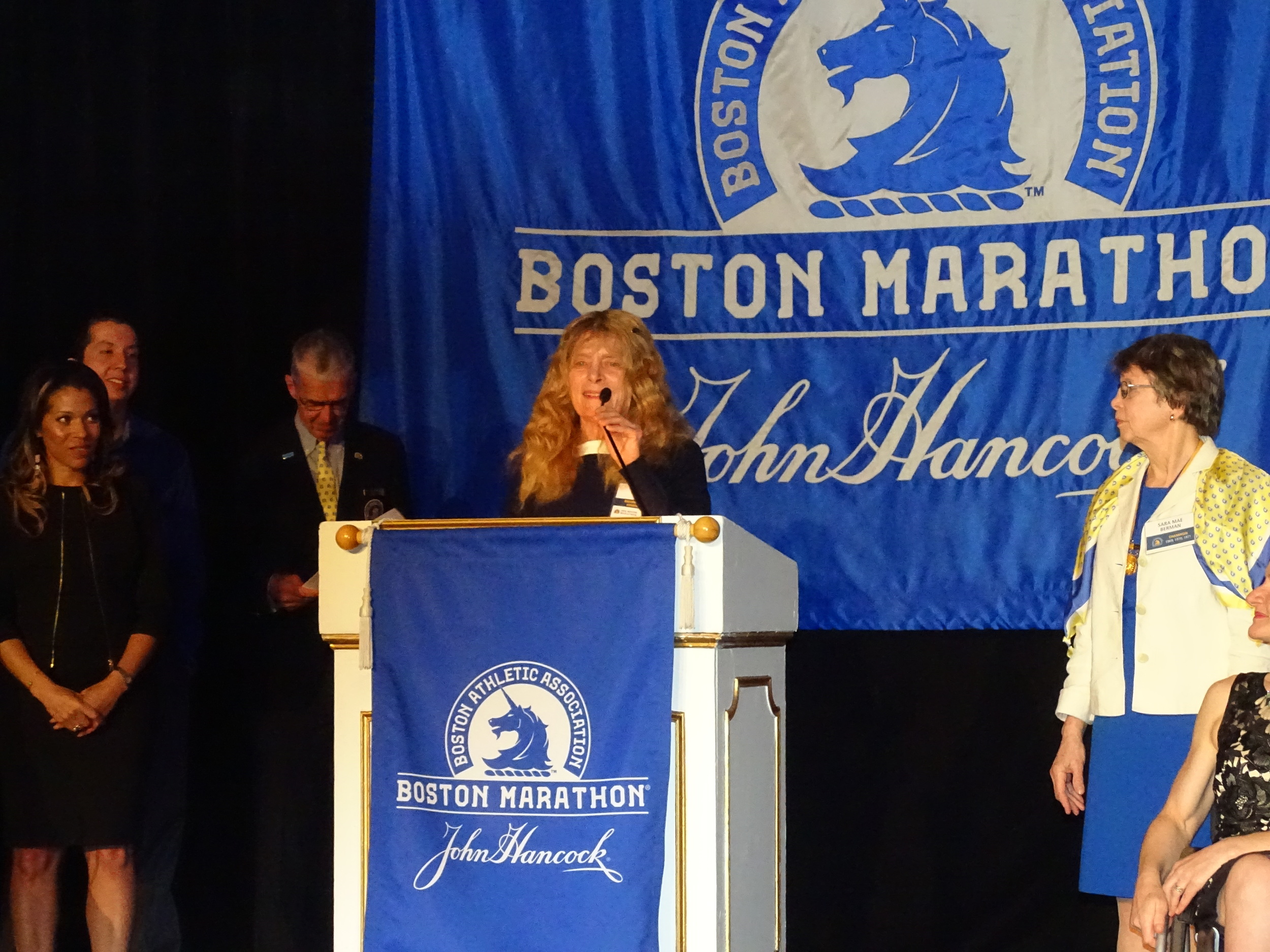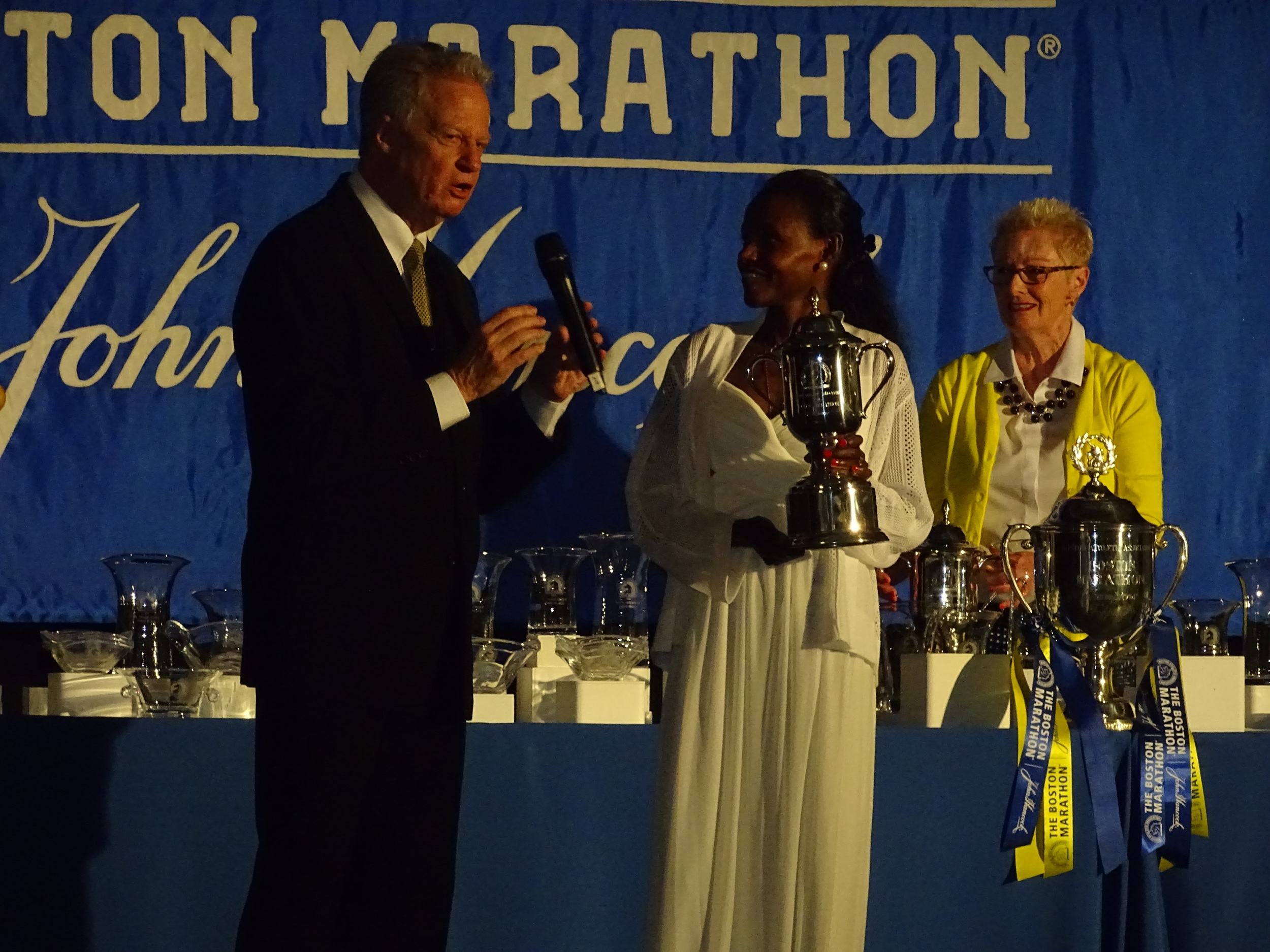In 26.2 Essays, Bobbi applies the insights she developed through decades of living, loving, and running to a multitude of human endeavors, including economics, politics, religion, sociology, and science. Each mile of the Marathon serves as a trigger for another essay just as the marathon serves as a powerful metaphor for our journey through life.
Editor'sChoice GoodSport
The Causes & Cures of Violence: Reflections on Recent World Events
Recently, Art New England Magazine challenged the arts community to take a stand on the violence that has impacted all of our lives. Here are my thoughts to share with our communities......
Will it be possible to heal the fear and hate in a fractured world?
Our goal as a human race has to be to evolve to a higher more loving consciousness… and this evolution requires not only creating the social, political and economic structures that make peace and freedom possible, but ultimately this enlightened consciousness is a very personal thing….
How can we help but be affected when we see the continuous stream of violence, murder, social, political and economic upheavals, civil wars, ethnic conflicts, sectarian violence, terrorism and schisms between and within religious groups, and wars between national states. We know from history how these situations can escalate into whole scale World Wars where millions of people die and millions more are hurt.
Will it be possible to heal the fear and hate in a fractured world?
To answer this question we need to look at the causes and cures of violence, social chaos and war.
Many people want peace and freedom, but very few know how to actually bring this about. Most people don’t understand that peace and freedom, while natural to human beings, also require that there be certain political, social and economic systems within which peace and freedom can flourish.
So the question becomes how do we create these structures in which peace and freedom are possible?
The first requirement is that there be a critical mass of people who are healthy, balanced and intelligent enough to figure out how to create these structures. The second requirement is the will to actually do what is necessary to create the structures that make peace and freedom possible.
The individual and society are two sides of the same coin. Healthy balanced human beings create healthy balanced societies and healthy balanced social, political and economic environments create healthy balanced individuals.
The individual is of paramount importance. It is the individual person, after all, who is born, lives, feels, hates, loves, fears, desires, discovers, builds, learns, creates, thinks, feels, and dies. And yet human beings are social creatures. We live in families, in groups, states, nations and in a global network of human interactions. Our ability to live together is inborn, but it is also learned, just as our ability to learn a language is inborn, but we have to learn the specific language that our family and group uses to communicate.
The basis of human society and morality is our ability to empathize with others, to feel as other’s feel, to stand in the shoes of other. Entire sections of our brains are devoted to social interactions, learning social norms, learning and speaking languages, recognizing human faces, and learning and feeling empathy with others.
There are over eighty-billion neurons in our brains and each neuron is made up of millions of tiny molecules and if some of those molecules go wrong our entire brain is thrown off balance. It’s amazing that this unlikely contraption works at all. And yet to understand the individual and to understand society we need to start with the human brain, which is the seat of conscious thought, sensation, emotion, spiritual experience, subjective experience, pleasure, pain, fear, hate decision making, love, intelligence, creativity and social ability. Behind all of our economic, political and social systems is the human brain.
So for a deep understanding of peace, freedom, war, violence, love, hate and fear we need to look at the human brain, for it is here that it all begins. We know, for example that certain kinds of stress produce physical changes in the brain that change the perceptions, feelings, thoughts and behaviours of individuals. Post traumatic stress syndrome is a familiar example, bi-polar disease, schizophrenia, even cultism and, so called, brainwashing produce changes in the brain. In fact every time you learn something like 2+2=4 synapses on the neurons in your brain rewire to store the memory of what you have learned.
More than this, we know that certain genetic characteristics can lead to the susceptibly to various neurological diseases, mental illness and neurotic tendencies. Defects in the gene that encodes, Parkin, for example can lead to Parkinson’s Disease. Defects in the gene that encodes Superoxide Dismutase can cause Amytrophic Lateral Sclerosis. Defects in certain genes on chromosome 6 lead to a susceptibility to Schizophrenia. We also know that these same diseases can occur in individuals who are born with seemingly normal genes.
When we look at the causes of violence we see that even perfectly normal people, when stressed or frightened become violent. Indeed this is a biological response to perceived danger. Hormones, released into the blood stream from the adrenal gland, affect brain function and produce the familiar flight or fight response that has emotional and physical ramifications. Continued stress can produce enduring changes in brain structure and function that feed a continuous cycle of fear and violence. If a person is susceptible to these stresses, schizophrenia can be triggered leading to more and more psychotic delusionary, behaviors that then can affect others, triggering abnormal responses in perfectly normal people.
One of the major causes of violence is mental illness, indeed violence itself, can be considered not only a crime but also a symptom of mental illness. Because of the stigma attached to mental illness, and the lack of real understanding of the diseases of the brain, not enough attention is paid to this field. The brain is just another organ, like the heart or kidney, however, because the brain is the seat of perception, intention and behavior, when something goes wrong in this organ, bizarre, complex and often frightening results occur.
People who have a genetic susceptibility for schizophrenia, for example, can live normal lives when unstressed, but under stress, symptoms begin to show, for males late adolescence, and for females a bit later. Symptoms can include paranoid delusions, hallucinations, bizarre beliefs, a susceptibility to cultism, and violence, a description that fits many cult leaders and terrorists. If drugs are added to the mix the situation becomes even more tragic, persistent and violent.
When a paranoid schizophrenic becomes a public figure, or worse, acquires political or economic power or power within a religious organization, the results can be devastating for an entire nation or for the entire world as we saw with such mentally ill figures as Hitler and Stalin. The public needs to be forewarned about the dangers of mentally ill people in the public eye, and schooled in the ability to identify mental illness when it occurs. When mental illness is detected it is important to build into our criminal justice system at all levels, local, national and international, the means for dealing with the crimes and violence perpetrated by someone suffering a disease of the brain.
So we see that violence begets violence in a self-feeding cycle that amplifies itself, enlarging the dysfunction as more and more people are affected by the violence and become violent in response thus spreading the violence in a chain reaction that becomes more and more difficult to stop.
When we add to this the error of typological thinking we see that entire groups can become targeted, and thus in turn be triggered into a response that further exacerbates the fear, hatred and violence. By typological thinking I mean if one individual of a group does something destructive, bad, violent, corrupt, or out and out evil, the entire group stands accused in the minds of the accuser. The evening news is full of examples of typological violence. One frightened policeman shoots a black man and all police stand accused. One black man kills a policeman or rapes a white woman and all African American men stand wrongfully accused. One investor corners the British pound, causing a devaluation in currency that has disastrous effect around the globe, and America, all Americans and the American government wrongfully stands accused because the unscrupulous investor happened to live in America. One group of Russian statesmen does something that scares Europe and the West and all Russians become suspect. One group of Muslims commits a terrorist crime and all Muslims are targeted. And so it goes. Typological thinking begets unconscious, stereotyped responses that beget misunderstandings and mistrust that produce fear, resentment and hatred that amplifies the originating incident to global proportions with disastrous and often violent results.
We saw an example of how violence begets violence in the tragedy that wracked Ireland for decades, and in the protest in Syria that sparked the civil war that has led to enduring human tragedy and millions of deaths and dislocations. Perhaps the most striking example of this exponential, expansion of violence is the initiation of World War I by the assassination of the Archduke Franz Ferdinand of Austria.
Violence evokes fear and fear changes the function and structure of the human brain with behavioural, emotional, social, political, and economic results. So when we seek to end violence we need to understand how this violence, which is born of pain and fear, results in hate, and how hate drives the human psyche and spreads to engulf entire populations, like a psychological pandemic. This pandemic of pain, fear, hate and violence leads to chaos that exacerbates the problem and the conflagration burns out of control.
In analyzing the etiology of violence, whether it is domestic violence in the home or world wars of global proportions, it is useful to treat violence as a disease for which a cure must be found. To find the cure often necessitates finding the causes of the disease and nipping it in the bud. Once the disease has taken hold, then nipping it in the bud is no longer possible and more powerful cures must be found. Clearly, just as in the case of physical disease, the most effective cure is prevention.
This brings us to discussion of peace. Peace is seen as the alternative to war, just as love is seen as the alternative to fear and hate. Just a love casts out fear, fear casts out love. Just as violence casts out peace, so peace can cast out violence. So it becomes of paramount importance to discover how to create and to maintain peace.
Interestingly, by peace we do not mean lack of conflict. Conflict is natural and inevitable among human beings and even within individual human beings. Who among us has not been in internal conflict about what actions to take or how to interpret events? And who among us has never been in conflict with another? Conflict is inevitable, whether it is about whether a child should have a candy bar or whether it is a dispute over how global resources are to be exploited or territories claimed and by whom.
Peace means there are non-violent means for resolving conflicts and for enforcing those resolutions once determined in as impartial and fair ways. This means adjudication and enforcement, whether it is Mother teaching Jane and Joe to share toys, or whether it is a court of law determining a divorce settlement, or whether it is an international court adjudication resource allocations among nations.
People may scoff cynically at the law, legislation, adjudication and bridle at enforcement, but the alternative is violent conflict. This adjudication must be fair and impartial, and generally respected as a means of conflict resolution. This means there must be means of continually insuring the integrity of the judicial, legislative and police force within and between nations. Without a system of justice, equity and enforcement a society devolves into chaos and corruption. Indeed corruption is the pre-courser of violence and ultimately of war. So self-checking systems must be built into the system. Just as the thermostat controls the temperature from becoming too hot or too cold these feedback controls need to be in place in our political, judicial, economic and financial systems to cut short these destructive self-feeding cycles of destabilization that lead to chaos.
What do we mean by corruption? We mean by corruption that the social political, economic functioning is perverted from its legitimate purpose. And what is the legitimate purpose of a social, political or economic system? The legitimate purpose of a social, political or economic system is the well-being of all those who participate in that society and in the proper and fair functioning of the economic and political systems through which a society structures, regulates, governs itself for the good of the whole and for the good of every individual.
But is the good of the whole always the good of each and every individual?
Yes, this has to be true, just as the good of the heart, and the good of the lungs and the good of very part of the functioning healthy organism is identical with the good of the whole, so the good of every individual and every part of society has to be the same as the good of the whole. A whole society is made up of all the people in that society. The American Constitution states: “We the people, in order to form a more perfect union, establish justice, insure domestic tranquility, provide for the common defense, promote general welfare, secure the blessings of liberty to ourselves and our posterity do ordain and establish this Constitution for the United States of America.” …. this is only the legitimate foundation of government— government that governs for the good of the whole and the good of every part.
So we see that peace is a dynamic state in which there are impartial fair means for settling the disputes that could lead to violence. There is also means for preventing people from hurting one another and there are means for removing those who hurt others from society in such a way as to either to rehabilitate them or to prevent them from continuing to hurt others.
So we see that safety is of fundamental importance to peace and to freedom. There will always be those who seek to harm others, whether from a perverted or absent sense of morality and empathy, or from a misconception that to get ahead entails making sure others do not. Unenlightened self interest mistakenly sees life as a zero sum game in which there is a finite amount of good and if one person has more, another person has to have less, and so the game becomes to get as much as one can no matter how much damage one causes to others. This is a disease called greed, and is prevalent among those who lack empathy or morality.
So to create peace and freedom it is necessary to create safety from harm. If a person is afraid to walk in her neighborhood she is not free. If a person is afraid to speak the truth he is not free. If a gang rules by violence those affected are not free. If corrupt businessmen create scams by which they rob others, then people are not free. If corrupt government officials siphon off money that is meant for public works projects, schools and hospitals then they are harming others.
So we see that to create peace and freedom we need to create the structures to protect ourselves from physical violence and predatory financial and economic games and from business and government corruption. So instead of wringing our hands about corruption in business and government, or railing against business or government, we need to create the mechanisms for digging out corruption when it occurs and for preventing it before it occurs. This requires watchdog boards of independent investigators that investigate business and government and each other and in which there is a continue turnover of members so that they themselves don’t become corrupt.
To prevent physical violence there has to be a non-corrupt highly skill multilevel police force and social service force, as well as the ability to identify and track those who are conspiring to commit violence, whether it is terrorism or organized crime. Police have one of the most difficult and important jobs in society. They are expected to be everything to everyone, whether it is walking a little old lady across the street or dealing with domestic fights or whether it is facing down armed gangs or whether it is stopping terrorists armed with bombs and military artillery.
What is needed is a number of levels of community interaction. We have in most places social service networks, shelters for the homeless, drug treatment and prevention centers that need to be expanded. We need neighborhood police who make friends with the law-abiding people in a neighborhood and seek out the trouble-makers who are then referred to social help centers. We need special police trained in dealing with gang warfare and terrorism. People fail to realize how dangerous police work can be and how, when faced with an ambiguous situation, with adrenalin pumping, a policeman can make a mistake. Of course, as in any profession there are the inevitable bad eggs, and these need to be sorted out.
So safety is paramount to peace and freedom and society has to have a coherent way of protecting itself from danger within and danger with out. Dangers often originate not with other human beings but from the forces of nature like volcanoes, tornados, earthquakes, fires, floods, epidemics, droughts and other accidental or natural causes, which can disrupt society and cause personal tragedy. These tragedies need to be anticipated and provided for. Engineers and scientists lend a hand in understanding these events and planning for contingencies. But people through their governments and civil organizations need to implement these protective measures, whether it is building underground cyclone shelters, or earthquake proof buildings or dams and levies to provide water in time of drought and to restrain water in time of flood. Here again the good of the individual and the good of society are dramatically interrelated.
People will often mistakenly give up freedom to ensure safety, not realizing that the biggest threat is from those who in the name of safety actually perpetrate violence, whether it is the dictator or tyrant purging his own people or whether it is a warmonger making war on some other nation or group in the name of power. We saw this all too tragically in WWII with the rise of Hitler and Stalin. Had the terms of the treaty of Versailles that ended WWI been structured differently, WWII would not have occurred. Had proper regulatory laws been in place, the Great Depression would not have occurred. Had proper regulatory laws not been deliberately gutted, the tragic financial collapse of 2008 that decimated people around the globe, would not have occurred. This is why it is of fundamental importance for people in general, and law makers in particular, to have a deep understanding of events and how policies shape events and to be committed to the good of the whole.
Globally we are developing structures for the peaceful resolution of conflict and this is crucial to the safety of the world. When wars or violence breaks out around the globe we need a multinational police force that enters in and ends the violence without taking sides. Once the violence is stopped the parties proceed to the International Courts of Justice for arbitration or adjudication.
So we see that when the structures that make peace and freedom possible break down we have chaos and violence. For example, the Middle East today is in the throws of deep social change as those whose power depends on repressive Theocracy struggle to maintain power in the face of growing numbers of those who want democracy, civil rights, human rights, freedom of religion and peace.
A peace enforced by totalitarian government is not a genuine peace; it is a frozen state of war in which there is no individual freedom or civil rights.
As a world, we need to look at another factor affecting peace and freedom namely the relationships between population, environment and economics. When people, whether through ignorance or poverty, or in an attempt to gain group ascendency through the force of shear numbers, engage in massive overpopulation, tragedy ensues. When a man with five wives and forty children living on a farm that can only support eight people sells his children into prostitution or into terrorist gangs, that society is sick. When a people over-populate their own resource base, they become dependent on outside sources that they obtain either by trade or by war.
Nature deals with over-population in a very unsentimental manner, namely war, disease or famine. Only when there is a stable population level for a given resource base is sustainability possible.
And yet, economically, when we look at what comprises a natural resource, we see that anything potentially can be a resource once the human mind invents a way of using it. For example, when New York City was lit by whale oil, only if a stable whale population and a stable human population were balanced could the situation be sustainable. But we saw an ever-increasing human population and an ever-decreasing whale population, which led to inevitable tragedy, in which fewer and fewer people could afford the more and more expensive whale oil.
Then a method of turning coal into kerosene was invented and lo and behold New York glowed again. So the resource base was expanded and the human population, which that new resource base could support, increased. So we see that new technologies of food production, for example, can allow greater levels of population. It is the balance between technology, resources, economic base and population that is important. Each resource base, however, has its rate-limiting step. For example the production of carbon dioxide, the release of methane and other green house gases from the utilization of coal, gas and petroleum contributes to climate change that affects the production of food and the habitability of entire regions of the globe.
In terms of violence worldwide the number of murders, that is, human beings killed by other human beings, as a percentage of the total human population now is much lower than for example in 1940, or indeed in any time in history, when we count all the deaths that result from war and violence as murders. As a world we are now dealing with these problems on a global basis more effectively than at any time in history. And yet there is so much more to do.
In summary then, false beliefs, ignorance and fear plague the human race and lead to tragedy and violence. So over coming false beliefs with new truths is essential. This requires research and thoughtfulness and a willingness to question old false beliefs and to discover what is true. These false beliefs occur in almost every human sphere, whether religion, child rearing, psychology, economics, politics or sociology, and manifest in prejudice and dysfunctional decision-making and behavior. Even science has made its share of mistakes over the centuries, which is why it is so important to continue research using the scientific method of experimentation, observation, and conclusion to discover the interrelationships among a multitude of causes and effects in every human endeavor from agriculture to astronomy, from governance to garbage disposal, from business to building, from water supply to war and peace.
So creating peace and freedom has to be our goal and we need to explore the ways of doing this as we move forward into creating healthy societies, healthy political systems and healthy economies that work for everyone.
Most importantly we need to realize that our goal as a human race has to be to evolve to a higher more loving consciousness… and this evolution requires not only creating the social, political and economic structures that make peace and freedom possible, but ultimately this enlightened consciousness is a very personal thing….
Bobbi Gibb
Copyright 2016
A Reflection & Expression of thanks for the 2016 Boston Marathon
My heart is full of gratitude to Atsede Baysa, who so quint-essentially embodies the human spirit of love and generosity.
I would also like to express my gratitude to the Massachusetts State Senate and House of Representatives, the Governor and Mayor, the Greek consulate, and the town of Hopkinton.
I am grateful for all those who made the marathon possible, such as the Boston Athletic Association, the Hancock Corporation and all the other sponsors, the athletes, police, National Guard, medical personnel, volunteers, spectators, all the towns along the course, those who set up and clean up, and everyone else who participated in this amazing event.
And to my own Bobbi Gibb 50th Anniversary Celebration Team; the committee of Boston Marathon Champions who launched the Marathon Sculpture Project; the media--who so generously helped me tell this story, and to my fellow “pioneering women”--a very special thanks.
These are just a few of the thousands of people who came together to celebrate life together and make the incredible 120th Boston Marathon a successful world-class event.
This year’s Boston Marathon was both inspirational and transformational. We saw again that the spirit of the marathon knows no divisions among people. The love that connects our hearts knows no boundaries and expresses the freedom that is so essential to the human soul. This year’s marathon can only be described as a huge love fest with hugs, tears and laughter.
People from over ninety nations, all ethnic, religious, political persuasions, and races came together in friendship, connecting with one another in heartfelt affection. All the artificial barriers we erect against one another simply did not exist. This year’s marathon was about love— the love that is fundamental to the human spirit that overcomes all obstacles, and is the foundation of all meaningful human endeavor.
The source of this love in the human heart out of which all this wondrous existence is continuously manifesting— this is the ultimate mystery and miracle. We cannot explain it; it contains us, we do not contain it. We celebrate this universal life with our being and that is what this year’s marathon was all about— re-connecting and re-experiencing that love, which connects all being and which is the fountain of all life.
#WBZunstoppable: Bobbi Gibb: 50 Years of Unstoppable Women
26.2 miles of stereotypes
Bobbi Gibb to serve as grand marshal at Boston Marathon
Bobbi Gibb: Contemporary Artist, Renaissance Woman
Winchester’s Bobbi Gibb to celebrate 50th anniversary with Boston Marathon
22 Inspiring Profiles of the Rebels, Rule Breakers, and Visionaries Who Changed the Sport Forever
With little left to prove on the roads after 1968, Gibb turned her attention to academics and art. She has had a lifelong and continuing interest in neuroscience, especially Lou Gehrig’s disease (ALS), which claimed a close friend a decade ago. She also sculpts and paints. In 1984, her sculpture was awarded to the first three finishers in the first U.S. Olympic Marathon Trials for women, famously won by Joan Benoit.
Some of her paintings—colorful swirling abstracts—will be made public for the first time this spring.
National Women's History Museum Acknowledges Bobbi
The National Women's History Museum graciously acknowledged Bobbi for her contribution to women's sports in their Facebook post of December 13, 2015. Based on the number of "likes" and "shares," Bobbi's courage is as relevant today as it was 50 years ago. If you are on Facebook, search their page for Bobbi Gibb and you can join the over 99,000 people that have "liked" this post!



